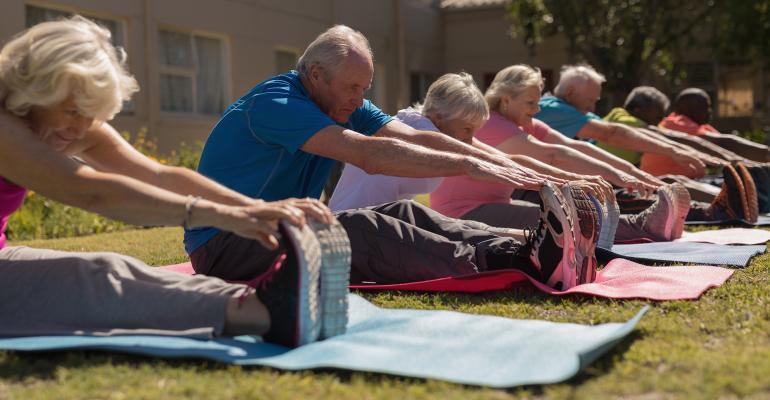More investors than ever before are buying active adult properties. To win bidding wars, they pay high prices and accept low yields—almost as low the yields they get from highly desirable, conventional rental apartment communities.
Developers have only been building large numbers of active adult properties for a few years. National data is still hard to come by.
However, the first waves active adult properties, which typically rent to people aged 55 and older, have filled with residents. Many performed very well during the pandemic—and that got the attention of large, institutional investors who are now bidding for properties.
“We are seeing assets in core locations achieving pricing levels that have never been hit before for this product type,” says Cody Tremper, managing director for JLL Capital Markets.
Dealmakers report low cap rates on sales of active adult properties
New investors are driving typical yields on investment in active adult properties down, according to dealmakers. Typical cap rates are now roughly the same as those investors accept when they buy comparable, conventional apartments.
“The spread between multifamily properties and active adult properties is now maybe 25 basis points… it is close to parity,” says John Sweeny, senior vice president of CBRE Senior Housing Capital Markets. He focuses on investment sales across the U.S., working in the firm’s offices in Austin, Texas.
Private equity funds focused on core and core-plus real estate have been particularly interested in the active adult business—they often are bidding for stabilized, class-A properties.
“Given some of the data on how these properties performed during the pandemic, institutional investors want exposure to active adult properties,” says CBRE’s Sweeny. CBRE is currently negotiating a wave of these transactions moving towards closing. “We have 25 assets that we are in some form of marketing.”
An undisclosed seller in Las Vegas recently sold three “nicely renovated,” class-B buildings operating as active adult communities. “Ultimately, the seller achieved a cap rate comparable to a class-B, multifamily community,” says Jay Wagner, executive managing director of senior housing capital markets for Cushman & Wakefield, working in the firm's offices in Boston.
Other deals now moving towards closing include many newer properties developed in recent years by leading developers like Greystar, often partnered with firms like the Carlyle Group.
“The volume of assets trading today is larger than it ever has been historically, and will continue to grow every year,” says Tremper. “This is still an emerging asset class that is growing every month as new supply comes online nationally.”
Strong performance lures investors
Many active adult communities, which serve relatively young seniors, performed very well during the pandemic.
“The pandemic actually strengthened the demand for active adult,” say JLL’s Tremper. “Active adult residents are not reliant upon the job market… we have seen collections at or near 100 percent throughout the pandemic.”
In contrast, other seniors housing properties suffered. Just 83.2 percent of independent living units were occupied in the third quarter of 2021. That’s a huge drop—the occupancy rate was 89.7 percent in the first quarter of 2020, according to NIC MAP Vision data, which does not yet provide this data for active adult properties.
“Active adult appeared to withstand the pandemic better than other types of seniors housing—it didn’t have the same impact in terms of case counts,” says Beth Mace, chief economist for NIC.
Many active adult communities are attracting renters from the huge Baby Boomer generation, which seniors housing investors have been looking forward to serving for decades.
The oldest Baby Boomers were born in 1946 and are now about 75 years old. That’s technically old enough to live at independent living communities restricted to people aged 65 and older. But the average resident at independent living properties is their mid-80s, according to Mace. In contrast, the average age at active adult properties is roughly 75.
Active adult also has a cost advantage for seniors who don’t need all the services—like meals—provided at independent living communities or the medical services provided by assisted living. Active adult rents are often just 10 percent higher than the rents at conventional multifamily communities. That’s much less than the rents at typical independent living communities, which are often 50 percent or even double typical apartment rents.
Active adult properties are also relative easy to keep full. The residents tend to stay for a long time, an average of six to eight years, compared to seniors housing properties like independent living and assisted living, where residents stay an average of just two years.
“Turnover is much less… so the risk of the asset is lower,” says CBRE’s Sweeny.

